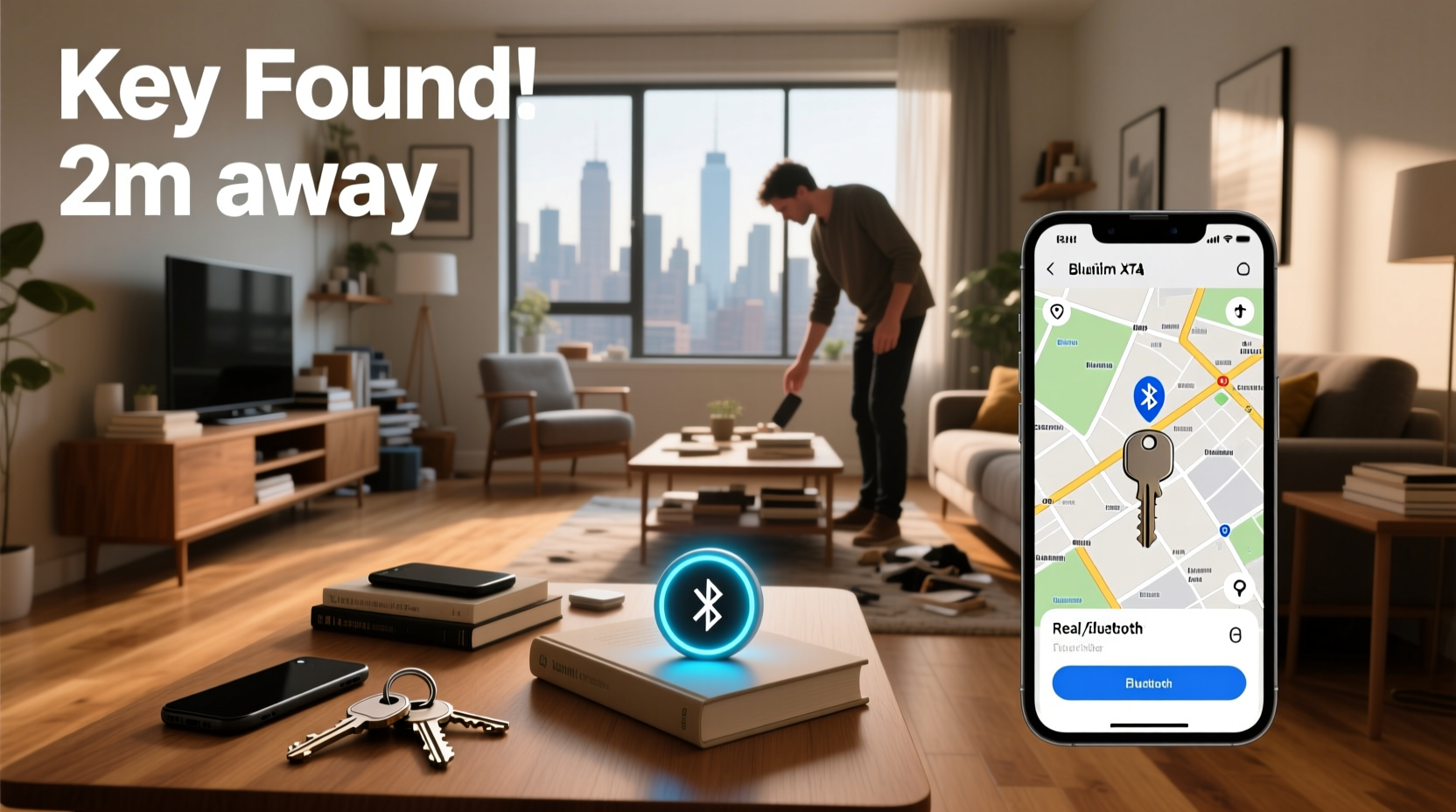Losing a key is one of the most common yet frustrating experiences. Whether it's your house key, car fob, or office access card, the moment you realize it’s missing can trigger stress and wasted time. The good news: with the right mindset, systematic approach, and modern tools, you can dramatically increase your chances of recovering a lost key—often within minutes. This guide outlines practical, science-backed methods and real-world-tested tools to help you locate misplaced keys efficiently, no matter where they’ve gone.
Start with the Psychology of Loss

Before launching into a frantic search, pause for a moment. Cognitive research shows that people often misplace items during routine actions performed on autopilot—like setting down keys while distracted by a phone call or entering a building. Your brain may not have encoded the action at all, making recall difficult.
The first step isn’t scanning the floor—it’s reconstructing your recent movements. Mentally retrace your steps from the last time you’re certain you had the key. Walk through each location slowly in your mind: Did you put it in your pocket? Drop it in a bag? Set it on a countertop?
Step-by-Step Search Protocol
A structured search process prevents wasted effort and emotional fatigue. Follow this timeline-based method to maximize recovery odds:
- Freeze and Reflect (0–2 minutes): Stop moving. Recall the last confirmed use of the key. Was it unlocking your car? Opening the front door?
- Scan Immediate Area (2–7 minutes): Examine pockets, bags, countertops, tables, and floors within 10 feet of where you last remember having the key.
- Expand Radius (7–15 minutes): Move outward room by room or block by block if outside. Check under cushions, inside jackets, near doorways, and in vehicle cup holders.
- Revisit Transit Zones (15–25 minutes): Focus on high-traffic transition areas—doorsteps, stairwells, sidewalks, parking spots. These are common drop points.
- Enlist Help & Use Tools (25+ minutes): If still missing, involve others and deploy technological aids.
This sequence aligns with how memory and spatial awareness function under stress. Rushing skips critical mental cues; patience increases accuracy.
Essential Tools for Key Recovery
Technology has transformed key recovery from guesswork to precision. Below is a comparison of popular tools based on effectiveness, cost, and ease of use.
| Tool | Best For | Pros | Cons |
|---|---|---|---|
| Bluetooth Trackers (e.g., Tile, Apple AirTag) | Indoor/outdoor tracking within ~300 ft | Real-time location via app, ring alerts, crowd-finding network | Requires prior attachment; subscription for premium features |
| Metal Detectors | Outdoor searches (yards, parks, beaches) | Covers large areas, detects buried items | Bulky, expensive, false positives from debris |
| Flashlights (especially UV/LED) | Dark corners, under furniture, reflective surfaces | Inexpensive, immediate, enhances visibility | Limited range, ineffective in cluttered spaces |
| Smart Home Integrations | Tracking entry/exit patterns | Doorbell cameras may capture when keys were last used | Depends on pre-existing setup and camera angles |
For everyday prevention, experts recommend pairing keys with a Bluetooth tracker. Once attached, these devices turn passive loss into active recovery.
“Over 60% of misplaced keys are found within the same room they were lost—usually within 24 hours. The key is methodical searching, not luck.” — Dr. Lena Torres, Cognitive Psychologist specializing in object permanence and memory
Real-World Example: Recovering Keys from a Park
Mark, a graphic designer, realized his house and car keys were missing after leaving a downtown park. He retraced his path using Google Maps Timeline to confirm his route. He remembered sitting on a bench near a fountain.
Returning within an hour, he used his Tile Pro’s “ring” function, even though he was out of Bluetooth range. When another Tile user passed nearby, the network updated the key’s location anonymously. Two days later, a jogger found the keys caught in tree roots and scanned the Tile tag, contacting Mark directly.
This case highlights the power of digital breadcrumbs and community-assisted tracking—tools that turned a likely permanent loss into a full recovery.
Prevention Checklist: Never Lose Keys Again
Recovery is important, but prevention is better. Use this checklist to minimize future losses:
- ✅ Attach a Bluetooth tracker to every essential keychain
- ✅ Designate a consistent home for keys (e.g., bowl by the door)
- ✅ Take a photo of your keys with GPS metadata enabled (useful for insurance)
- ✅ Keep a spare key in a secure, memorable location (not under the mat!)
- ✅ Label keys with contact info via discreet tag
- ✅ Use a smart lock system that allows PIN or app access as backup
Frequently Asked Questions
What should I do immediately after realizing my keys are lost?
Stop, take a breath, and mentally replay your last actions. Then inspect your clothing, bags, and immediate surroundings. Avoid panicking—most keys are found within 15 minutes using calm retracing.
Can I track a key without a tracker attached?
Not electronically. However, you can use indirect methods: check surveillance footage, ask witnesses, or retrace steps with a friend. Physical tools like flashlights or metal detectors may help in specific environments.
Are smart locks a reliable alternative to physical keys?
Yes. Modern smart locks offer encrypted access via apps, PIN codes, or biometrics. They reduce dependency on physical keys and often include activity logs. However, always maintain a backup method in case of power or tech failure.
Final Thoughts and Action Plan
Finding a lost key doesn’t require magic—just strategy, patience, and preparation. Start by calming your mind and reconstructing your movements. Conduct a staged search, expanding outward only when necessary. Leverage tools like Bluetooth trackers and smart home systems to shift from reactive panic to proactive recovery.
If you haven’t already, invest 10 minutes today in attaching a tracker to your keys and setting up a designated storage spot at home. That small habit could save you hours of stress tomorrow.









 浙公网安备
33010002000092号
浙公网安备
33010002000092号 浙B2-20120091-4
浙B2-20120091-4
Comments
No comments yet. Why don't you start the discussion?